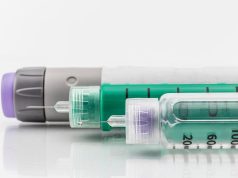Higher patient, graft survival and mean eGFR with more- and less-intensive belatacept vs. cyclosporine
WEDNESDAY, Jan. 27, 2016 (HealthDay News) — For kidney transplant recipients, a belatacept regimen is associated with improved patient and graft survival compared with a cyclosporine regimen, according to a study published in the Jan. 28 issue of the New England Journal of Medicine.
Flavio Vincenti, M.D., from the University of California in San Francisco, and colleagues randomized 660 kidney-transplant recipients to a more-intensive belatacept regimen, a less-intensive belatacept regimen, or a cyclosporine regimen. The authors analyzed the efficacy and safety outcomes at year seven; follow-up data were available for 153 of 219 patients in the more-intensive belatacept group; 163 of 226 in the less-intensive belatacept group; and 131 of 215 in the cyclosporine group.
The researchers found that, compared with the cyclosporine regimen, there was a significant reduction in the risk of death or graft loss for the more-intensive and less-intensive belatacept regimens (hazard ratio for both more- and less-intensive regimens, 0.57; P = 0.02), with equal contributions from lower rates of death and graft loss. Over the seven-year period there was an increase in the mean estimated glomerular filtration rate (eGFR) with both belatacept regimens, while a decrease was seen with the cyclosporine regimen. Across treatment groups the cumulative frequencies of serious adverse events were similar at month 84.
“Seven years after transplantation, patient and graft survival and the mean eGFR were significantly higher with belatacept (both the more-intensive regimen and the less-intensive regimen) than with cyclosporine,” the authors write.
The study was funded by Bristol-Myers Squibb, the manufacturer of belatacept.
Copyright © 2016 HealthDay. All rights reserved.








